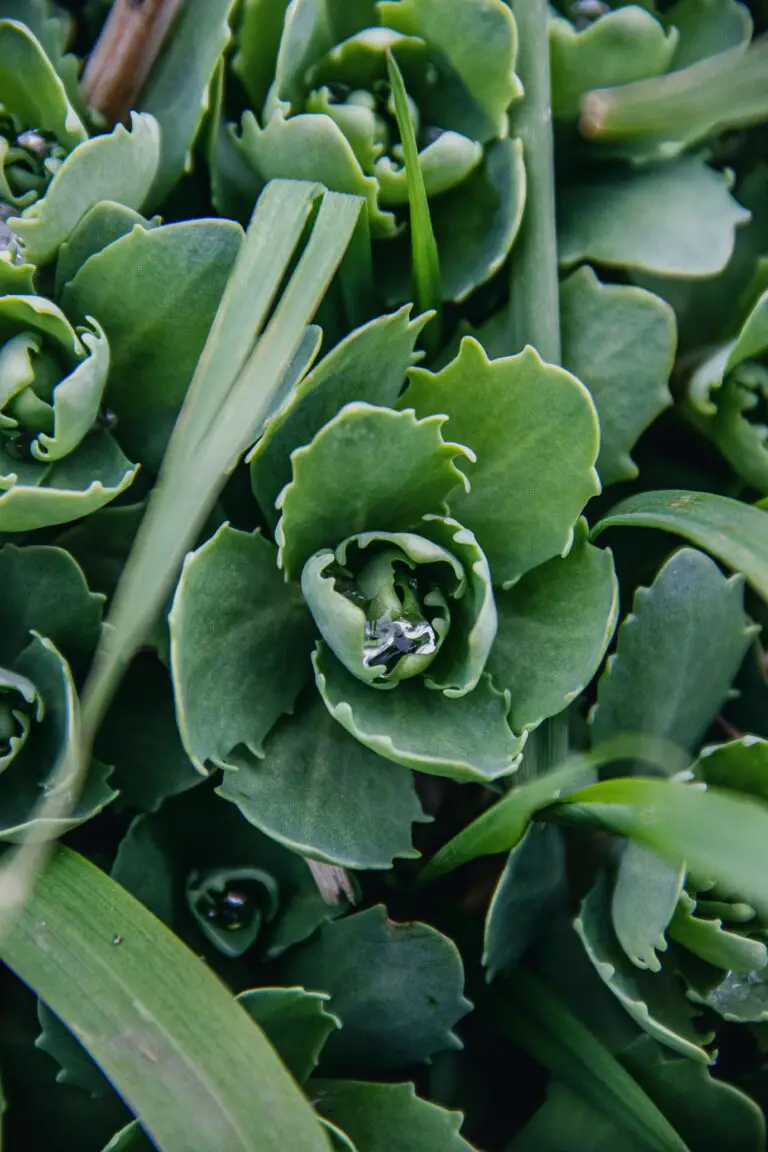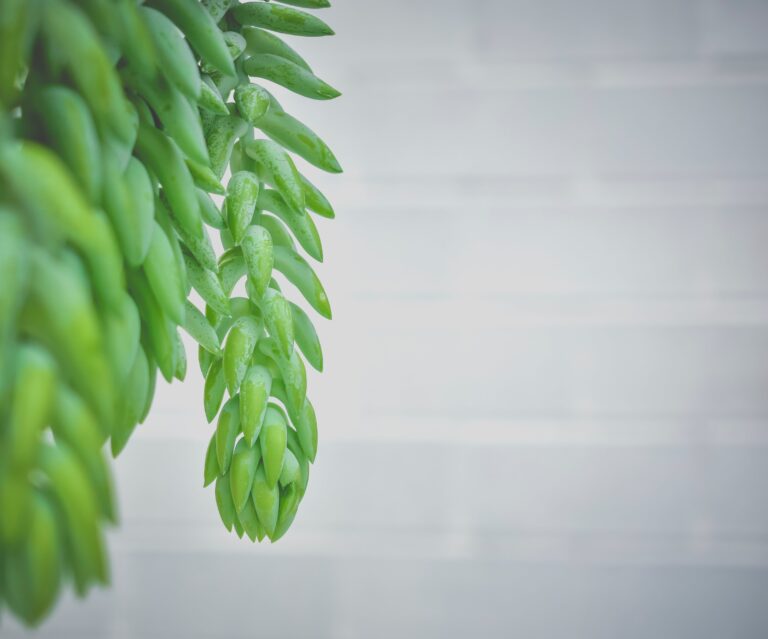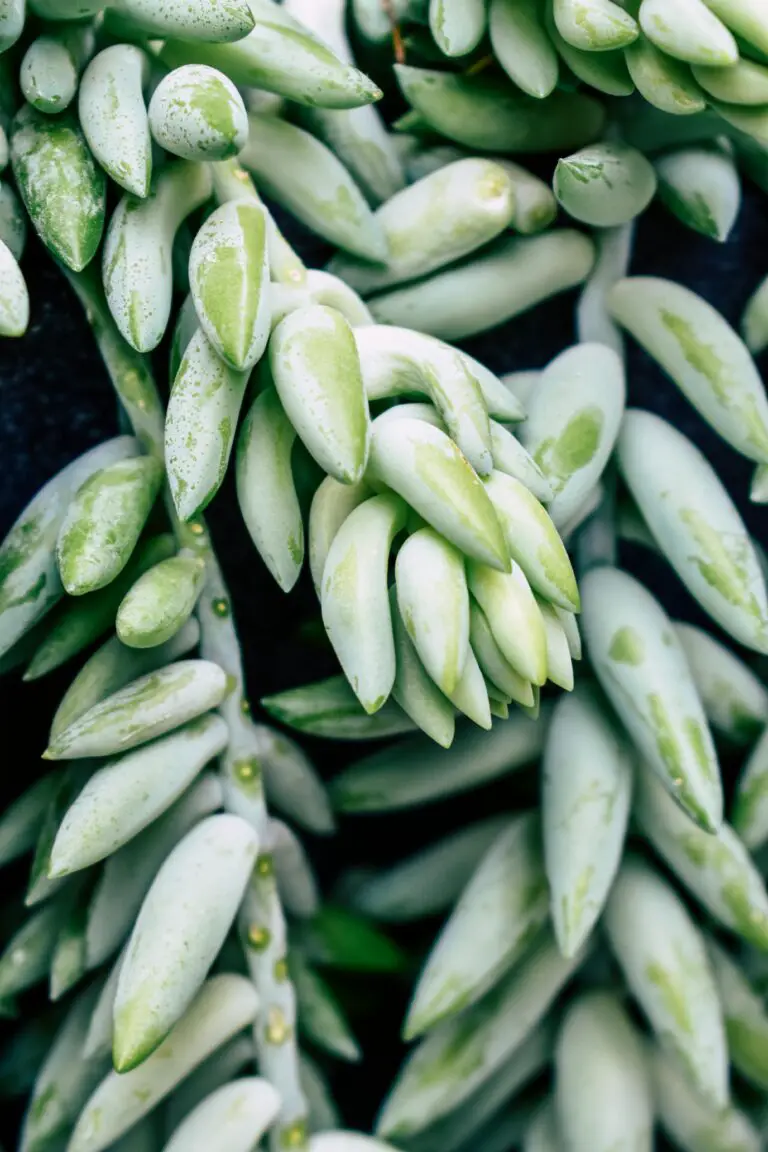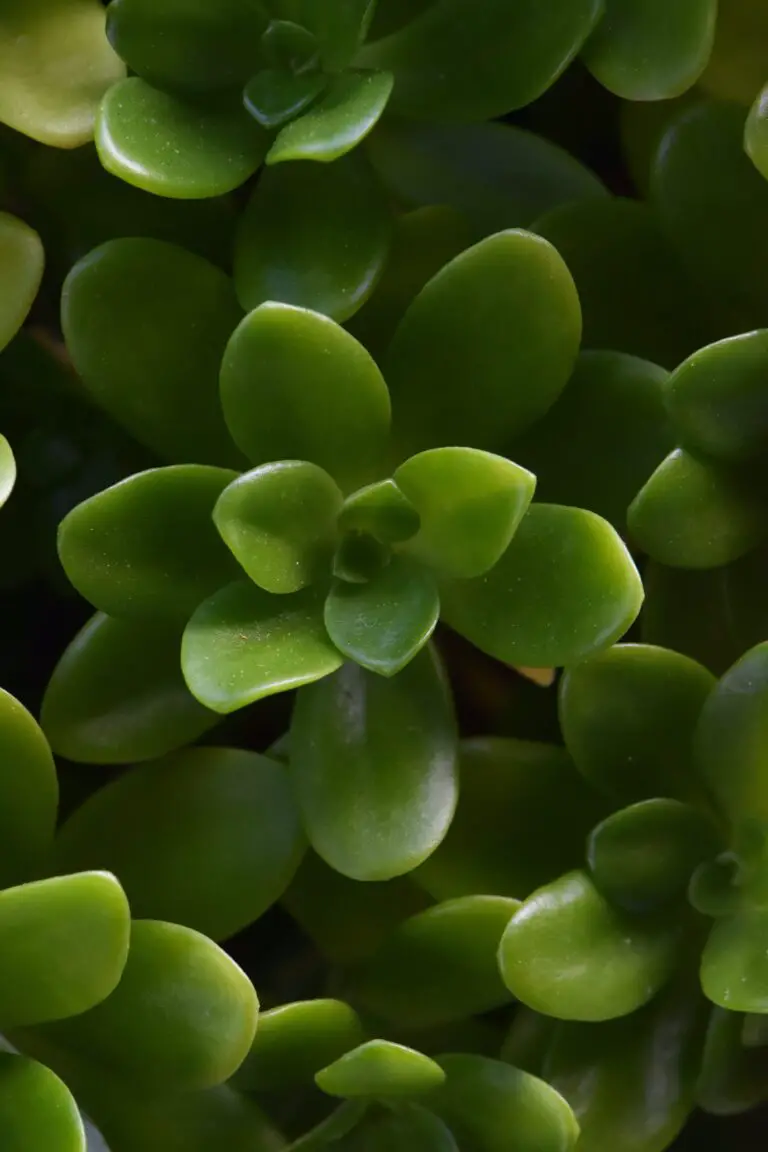Introducing Sedum Telephium
Delve into the verdant world of Sedum telephium, a plant whose very essence screams botanical wonder. Familiarly known as ‘Orpine’ or ‘Stonecrop,’ this hardy perennial is a jewel in the crown of garden biodiversity. Picture a midsummer’s garden, a canvas splashed with hues of deep purples and vibrant pinks, and you’ll likely find this star player amidst the green tapestry.
Consisting of thick, succulent leaves and crowned with cymes of star-shaped flowers, the Sedum telephium group brings a unique texture and form to any outdoor space. It’s not merely their striking appearance that makes these plants invaluable; it’s their resilience and their exceptional capacity to thrive with minimal fuss. They are a testament to nature’s ingenuity—flourishing in stony, unforgiving soils where few other plants dare to set roots.
Think of the quintessential English cottage garden, and you’ll envision borders peppered with Stonecrop’s whimsical charm. Orpine doesn’t just draw the eye of the casual admirer; it beckons a host of pollinators. Bees, butterflies, and other beneficial insects revel in the rich nectar and pollen provided by these plants. By introducing Sedum telephium to your garden, you’re establishing a haven for biodiversity, linking arms with nature to support our vital, buzzing friends.

The allure of Sedum telephium isn’t just skin-deep; these plants are deep-rooted in gardeners’ hearts due to their minimal maintenance needs. They are botanical soldiers, standing tall against drought, neglect, and the scorching summer sun, only to emerge more triumphant with each passing year. They are not simply survivors; they’re floral pioneers, leading the way in xeriscaping—gardening that reduces or eliminates the need for supplemental water from irrigation.
Real-life examples of Sedum telephium’s adaptability are abundant. From the urban rooftop gardens of the concrete jungle to rural rockeries baked in sun, these plants offer a resilient splash of color and life. They embody the spirit of low-maintenance gardening while performing an ecological ballet that supports local wildlife—truly, a botanical magnificent in our midst.
Historical Background
As we delve into the remarkable world of Sedum telephium, it’s like stepping back in time to an era where plants were more than just decorative pieces in our gardens. This resilient succulent, which weaves its way through various cultures, holds a treasure trove of history and symbolism. Its robust nature made it a plant of choice amongst traditional herbalists, while its vivid expressions of color and form captured the imagination of many.

In the realm of traditional medicine, Sedum telephium, also known as orpine, has been a quiet hero. People have often marveled at its purported healing abilities, especially in the treatment of wounds and inflammation. Like pieces of a mosaic, the anecdotes and practices from various cultures come together to portray this plant’s indispensable role in herbal remedies of yesteryears.
Moving from the old pages of herbal compendiums to the tales passed down through generations, orpine has symbolized enduring love and resilience—apt for a plant that thrives with minimal fuss in rocky terrains. The lore surrounding this plant is as rich as its succulent leaves, reminding us of the connection we share with the natural world. It was, and to some extent still is, a botanical symbol woven into the very fabric of human life and spirituality.
To understand more about how such marvelous plants contribute to our gardens today, consider exploring how to care for these resilient garden companions for a mix of practical guidance and botanical inspiration.
Characteristics and Identification
Discovering the magic of Sedum telephium in your garden is like unearthing a hidden gem amongst a treasure trove of succulents. With its distinctive physical attributes, this particular sedum nudges its way into the spotlight and sets itself apart with aplomb. Imagine running your fingers over the fleshy, oval-shaped leaves, noticing their unique whorled pattern spiraling out from sturdy stems. It’s this tactile experience, along with the leaf’s slight serration and dusky hue, which heralds the true identity of Sedum telephium.
Springing forth in midsummer to early fall, you’ll be enthralled by the starry blossoms that cluster together like constellations in a rosy-pink sky. Each tiny flower is a marvel, contributing to the opulent, dome-shaped flower heads that become a bustling metropolis for bees and butterflies. These seductive blooms don’t just flirt with pollinators; they turn your garden into a lively hub of nature’s best.
The growth habits of Sedum telephium are no less fascinating. Like a versatile actor, it adapts to numerous stage settings, from rock gardens to borders, growing proudly to a height that commands attention. Yet, it maintains a clumping form, a disciplined approach to its spread that ensures it plays well with fellow plants. This well-mannered growth is a trait especially cherished by gardeners seeking a low-maintenance but high-impact addition to their green ensemble.
For those curious to see this plant in action, behold! Here’s a delightful clip demonstrating the rugged charm and grace of Sedum telephium varieties thriving robustly in their natural habitat.
As garden magicians, we seek plants that not only enhance our gardens’ aesthetics but also forge an easy path to a successful green thumb. Sedum telephium, with its simple needs and visual splendor, does not disappoint. Whether you’re a seasoned horticulturist or a sproutling in the world of gardening, uncovering the wonder of this sedum is a sure route to creating an enchanting outdoor sanctuary.
Optimal Growing Conditions
Unveiling the secrets to a flourishing Sedum telephium in your garden is like sharing a treasured family recipe—it just feels right. Imagine the satisfaction as your Sedum transforms into a dazzling, low-maintenance showpiece, worthy of any green thumb accolades. Here’s how to make that happen!
Sunlight: Basking in the Goldilocks Zone
Just like us enjoying a day at the park, Sedum telephium adores the sun! But not just any sun—the perfect amount for this plant is about six hours of gentle morning sunlight, avoiding the more intense afternoon rays. Picture your Sedum in a spot that soaks in the early sun, then enjoys a bit of shade as the day heats up. This is what horticulturists call the ‘Goldilocks zone’ of sunlight—just right for your stonecrop friend.
Soil: The Foundation of Success
Think of soil as the cozy bed where your Sedum’s roots snuggle in. What this plant craves is a well-draining, loamy bed. A mix that’s too dense is like sleeping on a lumpy mattress—not very restful! You can achieve the dream soil by adding a scoop of sand or perlite, making sure the water drains away like a sigh of contentment. Remember, overly wet roots can spell disaster, akin to waking up with your feet in a puddle!
Watering Wisdom: Less is More
The watering can is your wand for garden magic, but with Sedum telephium, it’s a tool to be used sparingly. These plants don’t need a daily drench—they prefer to sip rather than guzzle. Allow the soil to dry out between waterings, making each drink a refreshing treat. Imagine only needing to water your plants every so often, giving you more time to enjoy the other delights of your garden.
Now, let’s take a visual journey with a video that illustrates the joy of caring for these resilient beauties:
For some extra tips, there’s a wealth of knowledge to be found in this comprehensive care guide. Whether you’re a budding beginner or a sage in the soil, it’s always wonderful to dig deeper and learn more about the enchanting world of Sedum telephium.
Health and Maintenance of Sedum Telephium
Gardening is not just about planting and watering; it’s an art of nurturing. When it comes to the robust Sedum telephium, or ‘Stonecrop’, as it’s fondly called, the plot thickens with its own set of drama and thrills. Let’s dive into the common challenges these steadfast beauties might face and arm you with the know-how to keep your Sedum telephium thriving.
First off, pests. They can be the bane of any gardener’s existence, and Sedum telephium is no exception. You might encounter aphids trying to siphon the life out of your succulent’s sap, or find caterpillars munching through the foliage like it’s an all-you-can-eat buffet. Fear not, for the fix is straightforward: a blast of water to knock off the aphids or a bio-friendly insecticide to bid the caterpillars farewell. Real-life example? My neighbor Jim was baffled by his withering Sedums until he spotted those tiny green aphids. Post a quick shower, his Sedums were back in the land of the living!
Combating Diseases
Next, diseases. Damp conditions can sometimes spell trouble, leading to fungal issues like root rot or powdery mildew making an unwelcome appearance. The trick here is prevention. Ensure your Stonecrop’s soil has good drainage and that you’re not overdoing it with the watering can. Annette from the garden club swears by a mix of part sand in her soil to keep that drainage on point.
Speaking of soil, Sedum telephium isn’t picky but it does crave a spot where it can bask in the sunlight. Full sun conditions are what these succulent stars yearn for. Just like Tom’s garden down the road; his Sedums get sun-kissed from dawn till dusk and they reward him with the most vibrant blooms.
Maintenance Tips
Now, let’s talk regular maintenance. This isn’t your high-maintenance variety of plant, but a little TLC goes a long way. Keep an eye out for dead or damaged leaves and snip them off to keep your plant looking tidy. Also, consider a springtime feed with a balanced fertilizer to give your Sedum telephium a boost as it gears up for growing season. Remember, less is more with these succulent sensations; they are drought-tolerant after all!

In a nutshell, with the right care, Sedum telephium can be a low-maintenance dream in your garden. By being alert to pests, mindful of diseases, and sticking to the basics of succulent care, you’ll have these perennials adding charm to your outdoors for years to come. So, keep those shears handy, the watering balanced, and enjoy the hardy resilience of this wonderful garden resident.
Landscape and Design Uses
Are you ready to unleash the charisma of Sedum telephium in your outdoor panorama? This robust beauty isn’t just a hardy trooper in the plant world but an ace up your sleeve for garden design magic! Picture this: a vibrant quilt of purple-tinged foliage playing Tetris between stones in your rock garden. Yes, that’s the visual drama Sedum telephium brings to the table.
But why stop there? Let’s merge utility with allure by crafting eco-savvy green roofs. The water-sipping nature of these succulents paired with their easy-go-lucky attitude makes them top picks for green roofing projects. Not only do they jazz up the joints but they’re kind to your utility bills too. And you know what’s cooler? You can say goodbye to dreary winter dulness! They keep their composure and color when other plants throw in the towel.
For those of you flirting with a cottage garden charm, cluster Sedum telephium along whimsical pathways and watch as they turn heads with their late-summer firework display of flowers. But, a little heads up – these stunners aren’t soloists, oh no. Blend them with other perennials like lavenders or grasses and you’ll have a symphony of textures that sing throughout the seasons.

Imagine stepping out to a curb appeal that stops passersby in their tracks. That’s the show-stopping prowess of a strategically placed Sedum telephium border. It’s like the sentient doorman of your garden – stately, reliable, and evergreen (well, everpurple, in this case). Just make sure you give them the VIP spot with good sunshine to see them strut their stuff.
Let’s talk outdoor soirees. Picture a rustic dining area, infused with the laissez-faire elegance of these botanical beauties. With a few artfully potted Sedum telephium as centerpieces, your alfresco dinner parties will be the toast of the town. And when the breeze picks up, their sturdy stems won’t flinch, ensuring your decor remains impeccable.
There’s enchantment in the versatility of Sedum telephium, whether it’s blending them into the fabric of a succulent garden or weaving them through a prairie-style haven. You’re not just planting a succulent; you’re scripting a saga where every leaf is a character and every bloom is a plot twist. Real-life gardens aren’t static; they’re an ongoing narrative, and Sedum telephium ensures your story has a happy evergreen ending.
Propagation Techniques for Sedum Telephium
Are you keen on multiplying the splendor of Sedum telephium in your garden? Look no further, as I’ll walk you through the enchanting journey of propagating this hardy and versatile perennial. With an array of earthy hues and resilient nature, Sedum telephium, also known as “Stonecrop,” is a fan-favorite among garden enthusiasts. Let’s dig into the propagation process that will allow you to create an awe-inspiring landscape teeming with these succulent beauties.
Preparation is Key: Setting the Stage for Success
First things first, we need to gear up! Spring to early summer is your golden window for propagation when the plant is bursting with growth. Equip yourself with clean, sharp scissors or pruning shears—sterilization with rubbing alcohol is not just a good practice, it’s gardeners’ gospel. Ensure you have pots filled with well-draining soil, as sedums detest soggy feet, or prepare a nursery area in your garden with similar conditions.
Step-by-Step Guide to Propagating by Cuttings
Now, onto the magical propagation dance:
- Select a Sedum Scout: Choose healthy, non-flowering stems for your cuttings. Look for stems with lush, vibrant leaves—they’ll be your best troopers.
- Snip Snip: Cut about a 4-6 inch length from the tip of the stem. Make a clean cut just above a leaf node—the point where leaves grow from the stem.
- Leafy Let Go: Pluck the lower leaves off the cutting, leaving the top leaves intact. This bare stem will be where roots dream to emerge.
- Rooting Riot: Now, you can either nestle these stem cuttings directly into the soil or first let them callous over for a day or two. If you’re a risk-taker who loves to witness the thrilling act of roots chasing through water, place the cuttings in a glass of water and await the rooting spectacle.
- Soil Swoon: For those who went straight to soil, mildly moisten the soil and insert the cutting about an inch deep. For the water propagators, once you observe roots, it’s time to transition them to their soil sanctuary.
- Sunlight Serenade: Sedum thrives under the caress of sunlight but prefers to play it cool during the rooting phase. Find them a spot with bright, indirect light and watch the magic unfold.
- Patience is Praiseworthy: Within a few weeks, your sedum scouts should anchor firmly, signaling their readiness to graduate to a permanent home within your garden’s embrace.
Have friends or neighbors who admire your Sedum telephium? Propagating and sharing the love is not just about expanding your garden’s charm—it’s about sowing the seeds of community and connection.
Visual Guide to Root Your Interest
For those of you who are visual learners, feast your eyes on this practical video. It showcases the captivating process of taking Sedum telephium cuttings and rooting them in water, revealing each awe-inspiring stage of this propagation method.
Remember, each cutting nurtured is a step towards a lusher, more vibrant garden. Happy propagating!
Environmental Benefits and Impact
When it comes to lush landscapes and vibrant gardens, Sedum telephium, or Stonecrop, is more than just a pretty face. This robust perennial brings with it a host of environmental benefits that play a crucial role in any sustainable garden’s storyline. Let’s delve into the backstage wonders of this garden superhero.

Ecosystem Health: The Stonecrop’s Starring Role
Imagine a utopia for insects, birds, and other wildlife, where food and shelter abound. Sedum telephium is the architect of this paradise. It’s not just scenery; it’s a vital food source with its nectar-rich blooms that invite a buzz of activity. By offering a smorgasbord for pollinators like bees and butterflies, Stonecrop doesn’t just sit in the spotlight; it shares it, fostering biodiversity that is the backbone of a thriving ecosystem.
Pollinators’ Pit Stop: How Sedum telephium Rolls Out the Red Carpet
In the high-stakes drama of survival, pollinators need reliable rest stops. Enter Sedum telephium: this plant’s colorful, star-shaped flowers are like billboards advertising a 24/7 diner to our winged friends. With the decline of pollinator populations raising alarm worldwide, planting Stonecrop is a simple yet effective action that every gardener can take to be part of the solution, turning their green space into a sanctuary where these critical players can thrive.
Picture-Perfect Sustainability: Stonecrop’s Behind-the-Scenes Magic
What if your garden could save water, reduce maintenance, and still steal the show? That’s the kind of low-impact, high-drama performance Sedum telephium delivers. This hardy succulent laughs in the face of drought, requiring minimal watering. Its secret lies in the fleshy leaves, which store water like backstage props, ready for the dry spells. Sustainable gardening is the trend on everyone’s lips, and with Stonecrop, it’s not just talk. This plant makes eco-friendly gardening not only doable but also absolutely enchanting.
Harvesting and Utilization

Imagine strolling through your garden, the scent of fresh earth mingling with the delicate fragrance of sedum telephium blooms. This versatile perennial, also known as the Stonecrop, boasts thick, succulent leaves and clusters of star-shaped flowers that cry out to be snipped and brought indoors. The art of harvesting Sedum telephium is as simple as it is satisfying. With a pair of clean, sharp shears, one can cut through the pliable stems with ease—ideally late in the morning, after the dew has cleared but before the afternoon sun begins its symphony of heat.
Once gathered, the tactile joy of Sedum telephium extends beyond its visual allure. These sturdy beauties morph into eye-catching elements within decorative arrangements. Picture their rosy hues nestled among autumn leaves on a dining room table or standing proudly in a mason jar on a sunny windowsill. Their long-lasting nature ensures they remain a point of interest well after other flowers have said their goodbyes.
But the enchantment of Sedum telephium extends even further, into the realms of healing and wellness. Historically, the plant has been a component in traditional medicine, with its leaves applied to wounds and burns as an anti-inflammatory agent. Contemporary herbalists still nod to this age-old practice, drying the leaves to create poultices or infusing them into oils that soothe skin ailments. The verdant plant doesn’t stop there; research continues to unearth potential medicinal applications for Sedum telephium, providing a bridge between the beauty of a garden and the bounty of natural health remedies.
It’s not often that a single plant can straddle the worlds of aesthetics and therapeutics so seamlessly. Whether it’s gracing a vase or grinding for an herbal concoction, Sedum telephium is a testament to the humility and magic that thrives within the garden’s green embrace. In its harvest lies the connection between human hands and nature’s whispers, a dialogue that persists through time and reminds us of the simple wonders resting at our fingertips.
Frequently Asked Questions
When it comes to Sedum telephium, gardeners and plant enthusiasts alike buzz with queries. It’s high time we dug in and unearthed the answers to sprinkle a little more understanding on this garden marvel.
Is Sedum Telephium easy to care for?
Absolutely! Picture this: it’s a sunny afternoon, and you’re out in your garden, admiring a stout, vibrant clump of Sedum telephium. This plant is far from fussy—it’s drought-tolerant, and thrives in those sunny spots where some of your other garden buddies might falter. Just give it well-drained soil, occasional watering, and watch it work its magic!
Can it handle cold weather?
Oh, it’s as tough as they come! Your Sedum telephium will stand tall and proud, even when Jack Frost is nipping at your other plants’ petals. This succulent is a true warrior, shrugging off cold snaps and bouncing back year after year.
What are the best companion plants for Sedum telephium?
Think of Sedum telephium as the friendly neighbor in the plant community. It mingles well with others, especially with those that share its love for the sun and well-drained soils. Lavender, Russian Sage, and ornamental grasses all make great chums for this sociable succulent, creating a textured tapestry in your garden symphony.
How do I propagate Sedum telephium?
Let’s get hands-on! Propagating Sedum telephium is like sharing your favorite secret recipe—it’s simple and rewarding! Snip off a stem, let it callous over for a day or two, and plant it in soil. Give it some time and a bit of water, and you’ll have new Sedum telephium plants sprouting up before you know it. It’s like magic—garden magic!
Does it attract wildlife to the garden?
Indeed it does! Imagine sipping your morning coffee and catching a glimpse of fluttering butterflies and busy bees, all attracted by the star-shaped blossoms of your Sedum telephium. It’s a hub of activity, providing nectar for pollinators and adding a buzz to your backyard habitat.
When is the best time to plant Sedum telephium?
Timing is everything, and in the case of Sedum telephium, early spring or autumn is your golden ticket. Planting during these seasons gives your succulents a chance to establish roots without the stress of midsummer heat. This way, they’re all settled in and ready to grow when the seasons are just right.




